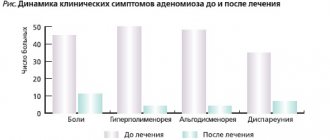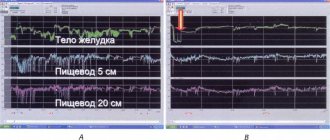Pharmacological properties of the drug Temozolomide
Antitumor agent of the group of alkylating compounds. In the systemic circulation at physiological pH values, it is rapidly converted into cytotoxic monomethyltriazenoimidazolecarboxamide (MTIC). The cytotoxic effect of MTIC is due to the alkylation of guanine at the O6 and N7 positions, followed by the triggering of the mechanism of aberrant reduction of the methyl residue. Disturbs the structure and synthesis of DNA, the cell cycle. When taken orally, it is quickly and completely absorbed from the digestive tract. The maximum concentration is reached after 0.5–1.5 hours. It binds weakly to blood plasma proteins (10–20%). Penetrates through the BBB. Not metabolized in the liver. The half-life is 1.8 hours. It is excreted primarily by the kidneys, 5–10% unchanged, the rest in the form of 4-amino-5-imidazolecarboxamide hydrochloride and unidentified polar metabolites. AUC is greater in children than in adults. However, the maximum tolerated dose per treatment cycle in children and adults is the same - 1000 mg/m2. Against the background of mild or moderate liver dysfunction, the pharmacokinetic parameters of temozolomide do not change.
Use of the drug Temozolomide
Orally on an empty stomach, at least 1 hour before meals; The capsules are swallowed without chewing with a glass of water. Adults and children over 3 years of age who have not previously received chemotherapy are prescribed an initial dose of 200 mg/m2 once a day for 5 consecutive days in a 28-day treatment cycle. For patients who have previously received chemotherapy, the initial dose is 150 mg/m2, followed by an increase in the second cycle to 200 mg/m2 (if on the 1st day of the next cycle the number of neutrophil granulocytes is not lower than 1.5 109 /l, and platelet count - not lower than 100 109 /l). The course continues until the disease progresses (maximum 2 years).
Temozolomide-Rus
Newly diagnosed glioblastoma multiforme (adult patients)
The following are side effects observed in the treatment of patients with newly diagnosed glioblastoma multiforme during the combination and adjuvant phases of treatment during clinical trials (a causal relationship between the drug and side effects has not been established). The frequency distribution of side effects is made in accordance with the following gradation: very often (>10%), often (>1%,0.1%,
Combined treatment phase (with radiation therapy)
Mechanisms of resistance to infections: often - oral candidiasis, herpes simplex, pharyngitis, wound infection, other infection.
From the hematopoietic and lymphatic systems: often - leukopenia, lymphopenia, neutropenia, thrombocytopenia; uncommon - anemia, febrile neutropenia.
From the cardiovascular system: often - edema, including swelling of the legs, hemorrhages; Uncommon: palpitations, increased blood pressure, cerebral hemorrhage.
From the respiratory system: often - cough, shortness of breath; Uncommon: pneumonia, upper respiratory tract infections, nasal congestion.
From the endocrine system: infrequently - Cushingoid.
From the nervous system: very often - headache; often - anxiety, emotional lability, insomnia, dizziness, balance disorder, impaired concentration, ataxia, confusion and decreased consciousness, aphasia, dysphasia, convulsions, memory impairment, peripheral neuropathy, paresthesia, agitation, drowsiness, speech disorder, tremor; uncommon - apathy, behavioral disorders, depression, hallucinations, impaired perception, extrapyramidal disorders, gait disturbance, hemiparesis, hyperesthesia, hypoesthesia, neurological disorders (unspecified), status epilepticus, parosmia, thirst.
From the skin and subcutaneous tissue, mammary glands: very often - alopecia, rash; often - dermatitis, dry skin, erythema, itching, facial swelling; infrequently - photosensitivity, pigmentation disorders, exfoliation.
From the musculoskeletal system: often - arthralgia, muscle weakness; uncommon - back pain, musculoskeletal pain, myalgia, myopathy.
From the organ of vision: often - blurred vision; uncommon - eye pain, hemianopsia, blurred vision, decreased visual acuity, limited visual field.
From the hearing organs and vestibular system: often - hearing impairment; uncommon - ear pain, hyperacusis, otitis media, tinnitus.
From the digestive system: very often - anorexia, constipation, nausea, vomiting; often - increased alanine aminotransferase activity, hyperglycemia, weight loss, abdominal pain, diarrhea, dyspepsia, dysphagia, stomatitis, taste disturbance; uncommon - hypokalemia, increased alkaline phosphatase activity, weight gain, change in tongue color, increased activity of gamma-glutamyl transpeptidase, aspartate aminotransferase, liver enzymes.
From the genitourinary system: often - frequent urination, urinary incontinence; infrequently - impotence.
On the part of the body as a whole: very often - increased fatigue; often - fever, pain, radiation injury, allergic reaction; infrequently - hot flashes, asthenia, deterioration, chills.
Adjuvant phase of treatment
Mechanisms of resistance to infections: often - oral candidiasis, other infection; uncommon - herpes simplex, herpes zoster, flu-like symptoms.
From the hematopoietic and lymphatic systems: often - anemia, febrile neutropenia, leukopenia, thrombocytopenia; infrequently - lymphopenia, petechiae.
From the cardiovascular system: often - swelling of the legs, hemorrhages, deep vein thrombosis; infrequently - edema, including peripheral edema, pulmonary embolism.
From the respiratory system: often - cough, shortness of breath; uncommon - pneumonia, upper respiratory tract infections, sinusitis, bronchitis.
From the endocrine system: infrequently - Cushingoid.
From the nervous system: very often - headache, convulsions; often - anxiety, depression, emotional lability, insomnia, dizziness, balance disorder, impaired concentration, ataxia, confusion, aphasia, dysphasia, speech disorder, hemiparesis, memory impairment, neurological disorders (unspecified), peripheral neuropathy, paresthesia, drowsiness, tremor ; uncommon - hallucinations, amnesia, gait disturbance, hemiplegia, hyperesthesia, sensory organ disturbances.
From the side of the track and subcutaneous tissue, mammary glands: very often - alopecia, rash; often - dry skin, itching; uncommon - erythema, pigmentation disorder, increased sweating, breast pain, facial swelling.
From the musculoskeletal system: often - arthralgia, muscle weakness, myalgia, musculoskeletal pain; infrequently - back pain, myopathy.
From the organ of vision: often - blurred vision, diplopia, limitation of visual fields; Uncommon: eye pain, dry eyes, decreased visual acuity.
From the hearing organs and vestibular system: often - hearing loss, ringing in the ears; infrequently - deafness, ear pain, dizziness.
From the digestive system: very often - anorexia, constipation, nausea, vomiting; often - increased alanine aminotransferase activity, weight loss, diarrhea, dyspepsia, dysphagia, stomatitis, dry mouth, taste disturbance; uncommon - hyperglycemia, weight gain, bloating, fecal incontinence, hemorrhoids, gastroenteritis, dental diseases.
From the genitourinary system: often - urinary incontinence; uncommon - dysuria, amenorrhea, menorrhagia, vaginal bleeding, vaginitis.
On the part of the body as a whole: very often - increased fatigue; often - fever, pain, radiation injury, allergic reaction; infrequently - asthenia, deterioration, chills.
Laboratory indicators: myelosuppression (neutropenia and thrombocytopenia), is a dose-limiting side effect. Among patients of both groups (with combination and adjuvant therapy), grade 3 and 4 changes in neutrophils, including neutropenia, were noted in 8% of cases, and in platelets, including thrombocytopenia, in 14% of cases.
Progressive or recurrent malignant glioma (adults and children over 3 years of age) or malignant melanoma (adults)
The following adverse events noted when taking Temozolomide-Rus are distributed according to the frequency of occurrence in accordance with the following gradation: very often (>10%), often (>1%, 0.1%, 0.01%,
From the hematopoietic system: often - thrombocytopenia, neutropenia, lymphopenia; uncommon - pancytopenia, leukopenia, anemia. When treating patients with glioma and metastatic melanoma, cases of thrombocytopenia and neutropenia of grade 3 or 4 were observed in 19% and 17%, respectively, with glioma and in 20% and 22%, respectively, with melanoma. Hospitalization of the patient and/or discontinuation of Temozolomide-Rus was required in 8% and 4% of cases, respectively, for glioma and in 3% and 1.3% for melanoma. Bone marrow suppression developed usually during the first few cycles of treatment, with a maximum between 21 and 28 days; recovery occurred, as a rule, within 1-2 weeks. There were no signs of cumulative myelosuppression.
From the digestive system: very often - nausea, vomiting, anorexia, constipation; often - diarrhea, abdominal pain, dyspepsia, taste disturbances. The most common were nausea and vomiting. In most cases, these phenomena were 1-2 (mild to moderate) in severity and resolved independently or were easily controlled with standard antiemetic therapy. The incidence of severe nausea and vomiting is 4%.
From the nervous system: often - headache; often - drowsiness, dizziness, paresthesia, asthenia.
Dermatological reactions: often - rash, itching, alopecia, petechiae; very rarely - urticaria, exanthema, erythroderma, erythema multiforme, toxic epidermal necrolysis, Stevens-Johnson syndrome.
From the immune system: very rarely - allergic reactions, including anaphylaxis.
Other: often - increased fatigue; often - weight loss, shortness of breath, increased body temperature, chills, general malaise; rarely - opportunistic infections, including pneumonia caused by Pneumocystis carinii; very rarely, the development of myelodysplastic syndrome and secondary malignant processes, including leukemia, was observed, and the development of prolonged pancytopenia with the risk of developing aplastic anemia and irreversible infertility was also noted.
When using the drug at doses of 500 mg/m2, 750 mg/m2, 1000 mg/m2 and 1250 mg/m2 (total dose received over a 5-day treatment cycle), the dose-limiting toxicity was hematological toxicity, which was observed at any dose. but more pronounced - at higher doses. A case of overdose (taking a dose of 2 g/day for 5 days) has been described, which resulted in pancytopenia, pyrexia, multiple organ failure and death. When taking the drug for more than 5 days (up to 64 days), among other side effects, inhibition of hematopoiesis was noted, complicated or uncomplicated by infection, in some cases long-term and severe, with a fatal outcome.
A specific antidote for temozolomide is unknown. Hematological monitoring and, if necessary, symptomatic therapy are recommended.
Special instructions for the use of the drug Temozolomide
The effectiveness and safety of use in children under 3 years of age with glioblastoma multiforme and under 18 years of age with melanoma have not been determined. Experience with glioma in children over 3 years of age is limited. Use is only possible under the supervision of a physician experienced in chemotherapy. Treatment begins if the number of neutrophil granulocytes is at least 1.5•109/l, platelets - at least 100•109/l. A clinical blood test is required before and during therapy: on the 22nd day, i.e. on the 21st day after taking the first dose (but no later than 48 hours after this day) and then once a week until the number of neutrophil granulocytes reaches 1.5•109/l, and platelets - 100•109/l. If the number of neutrophil granulocytes is less than 1.0•109/l or platelets less than 50•109/l during any treatment cycle, a dose reduction in the next cycle is necessary (the minimum recommended dose is 100 mg/m2). Women of childbearing age, as well as men, must use effective contraception during treatment and for 6 months after its completion. Men are advised to seek advice about sperm cryopreservation before starting treatment due to the possible risk of irreversible infertility. Use with caution in patients over 70 years of age (increased risk of developing neutro- and thrombocytopenia) and in patients with severe impairment of liver and kidney function. If powder from a damaged capsule gets on the skin or mucous membranes, it should be immediately and thoroughly rinsed with water. Antiemetic drugs are used before or after taking temozolomide. In the presence of severe vomiting (more than 5 attacks within 1 day), preliminary antiemetic therapy is necessary.
Temozolomide
The following adverse events noted when taking temozolomide are distributed according to the frequency of occurrence according to the following gradation: very often (>=10%), often (>=1%, <10%), infrequently (>=0.1%, <1 %), rare (>=0.01%, <0.1%) and very rare (<0.01%).
From the hematopoietic system: often - thrombocytopenia, neutropenia, lymphopenia; uncommon - pancytopenia, leukopenia, anemia, febrile neutropenia. Bone marrow suppression usually developed during the first few cycles of treatment, with a maximum between days 21 and 28; recovery occurred, as a rule, within 1-2 weeks. There were no signs of cumulative myelosuppression.
From the digestive system: very often - nausea, vomiting, anorexia, constipation; often - diarrhea, abdominal pain, dyspepsia, taste disturbance, dysphagia, stomatitis, dry mouth; infrequently - flatulence, gastroenteritis.
From the nervous system: very often - headache, convulsions; often - drowsiness/insomnia, dizziness, paresthesia, asthenia, imbalance, confusion, memory impairment, speech disorder, tremor, neuropathy, anxiety, depression, emotional lability; uncommon - hallucinations, amnesia, gait disturbance, hyperesthesia, hypoesthesia.
From the cardiovascular system: often - peripheral edema, hemorrhage, deep vein thrombosis; uncommon - palpitations, arterial hypertension, cerebral hemorrhage, pulmonary embolism.
From the respiratory system; often - cough, shortness of breath; infrequently - sinusitis, bronchitis. From the genitourinary system: often - frequent urination; uncommon: impotence, dysuria, amenorrhea, menorrhagia, vaginal bleeding, vaginitis. Dermatological reactions: very often - alopecia, rash; often - itching, dry skin, erythema, dermatitis, petechiae; uncommon - pigmentation disorders, photosensitivity, increased sweating; very rarely - urticaria, exanthema, erythroderma, erythema multiforme, toxic epidermal necrolysis, Stevens-Johnson syndrome.
From the musculoskeletal system: often - arthralgia, muscle weakness, myalgia; infrequently - back pain.
From the organ of vision: often - blurred vision, diplopia, narrowing of visual fields; Uncommon: eye pain, dry eyes, decreased visual acuity.
From the organ of hearing: often - hearing loss, ringing in the ears; infrequently - ear pain.
From the endocrine system: infrequently - Cushingoid.
From the immune system: very rarely - allergic reactions, including anaphylaxis.
From laboratory parameters: often - hyperglycemia, increased alanine aminotransferase (ALT) activity; infrequently - hypokalemia, increased activity of aspartate aminotransferase (AST), alkaline phosphatase and gamma-glutamyltransferase Other: very often - increased fatigue; often - weight loss, increased body temperature, general malaise; infrequently - weight gain, feeling of heat (“hot flashes”), chills, flu-like syndrome; rarely - the addition of opportunistic infections, including pneumonia caused by Pneumocystis carinii; very rarely, the development of myelodysplastic syndrome and secondary malignant processes, including leukemia, was observed, and the development of prolonged pancytopenia with the risk of developing aplastic anemia was also noted.


